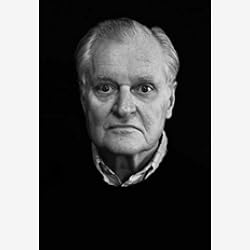
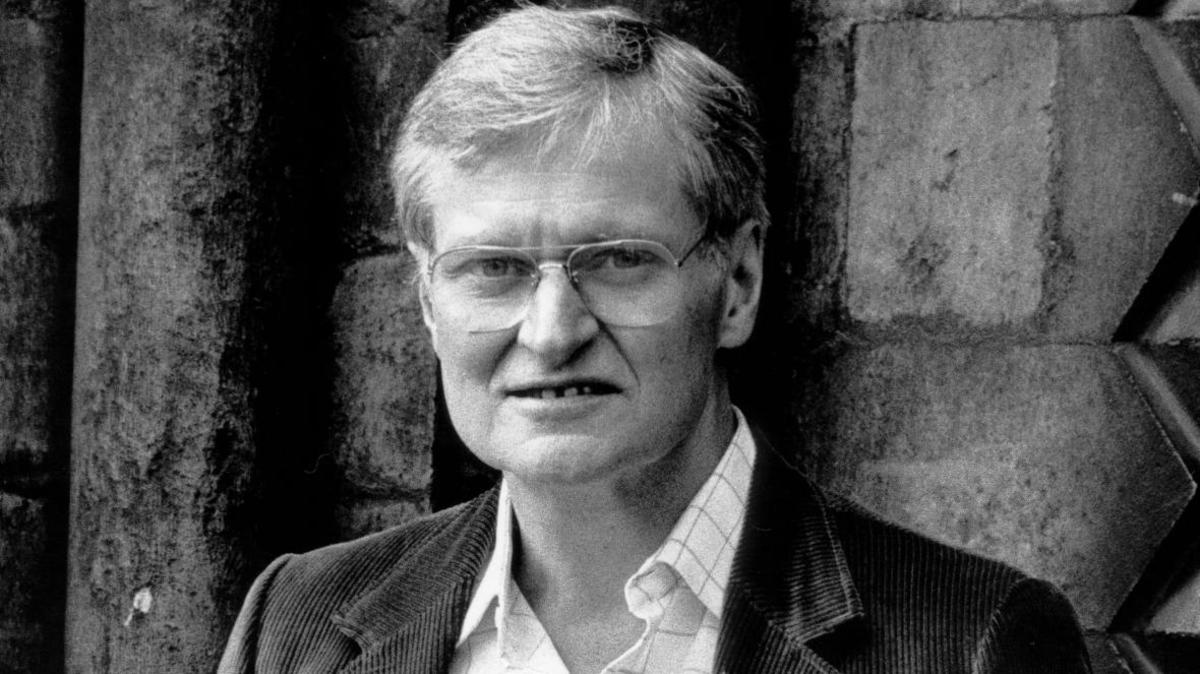
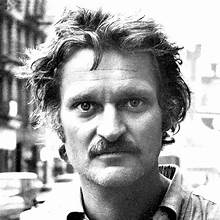
John Ashbery
Research, Studies, Reading
By Mike Garofalo
John Ashbery (1927-2017)
Ashbery, John. Notes from the Air: Selected Later Poems. Ecco, 364 pages, 2007, index. VSCL.
Ashbery, John. John Ashbery: Selected Poems. Elisabeth Sifton Books, Penguin, 349 pages, 1986, index. VSCL.
Ashbery, John. The Mooring of Starting Out: The First Five Books of Poetry. Harper-Collins Ecco, 1956, 1997, 389 pages. VSCL.
Ashbery, John. Self-Portrait in a Convex Mirror. Penguin, 1990, 96 pages. VSCL.
John Ashbery and American Poetry. By David Herd. Manchester University Press, 2003, indexes, notes, bibliography, 245 pages. VSCL.
On the Outside Looking Out: John Ashbery's Poetry. By John Shoptaw. Harvard University Press, 1995, 432 pages. VSCL.
A Study Guide for John Ashbery's Self-Portrait in a Convex Mirror. Cengage Learning Gale. VSCL.
John Ashbery: Collected Poems: 1991-2000. Edited by Mark Ford. Library of America, 2017, 819 pages, index, notes. VSCL.
John Ashbery: Studies, Research, Reading: Bibliography, Links, Notes, Criticism. By Mike Garofalo.
John Ashbery: Collected Poems: 1956-1987. Edited by Mark Ford. Library of America, 2008, index, notes, 1,046 pages. FVRL.
John Ashbery. They Knew What The Wanted: Collages and Poems. Rizzoli Electa, 2018, 128 pages. FVRL.
John Ashbery: Critical Lives. By Jess Cotton. Reaktion, 2023, 224 pages. A critical biography.
The Songs We Know Best: John Ashbery's Early Life. By Karin Roffman. Farrar, 2018, 336 pages. A critical biography.
A Serpentine Gesture: John Ashbery's Poetry and Phenomenology. By Elisabeth W. Joyce. University of New Mexico Press, 2024, 258 pages.
The Last Avant-Garde: The Making of the New York School of Poets. By David Lehman. Knopf Doubleday, 448 pages, 1999. VSCL.
A Study Guide for John Ashbery's Paradoxes and Oxymorons. Cengage Learning Gale.
John Ashbery's Nest - Yale University.
John Ashbery - The Poetry Foundation.
John Ashbery - The Poet's Org.
John Ashbery - Bing Search
John Ashbery on UTube: Interviews, Poetry Readings, Critical-Biographical.
John Ashbery's Musical Library: A Playlist.
John Ashbery Live at Sanders Theatre. Compact Disk. 1976.
Audio Recordings of Readings by John Ashbery and Interviews. Pennsylvania State University Archives.
Penn Sound: MP3 Format. Outstanding and well-organized collection of MP3s and UTube recordings.
John Ashbery Books at Powells Bookstore.
John Ashbery Kindle E-Books on Amazon.



Members of the New York School of Poetry (1950-1990):
John Ashbery, Kenneth Koch, Frank O'Hara, James Schuyler, Barbara Guest
Koch, Kenneth (1925-2002). Making Your Own Days: The Pleasures of Reading and Writing Poetry. 1998, 320 pages. VSCL.
Koch, Kenneth (1925-2002). Selected Poems. Edited by Ron Padgett. Library of America, American Poets Project #24, 200 pages, 1998, 2005. VSCL.
O'Hara, Frank (1926-1966). The Collected Poems of Frank O'Hara. Edited by Donald Allen. University of California Press, 1995, 624 pages. VSCL.
Schuyler, James Marcus (1923-1991). Selected Poems. Farrar, 2007, 312 pages.
Barbara Guest (1920-2006) Wikipedia
The Last Avant-Garde: The Making of the New York School of Poets. By David Lehman. Knopf Doubleday, 448 pages, 1999. VSCL.
The New York School of poets is often organized into two generations: the first was centered around a core group of five poets: John Ashbery, Barbara Guest, James Schuyler, Kenneth Koch, and Frank O’Hara. The second generation included poets Alice Notley and her husband, Ted Berrigan; Bill Berkson; and Ron Padgett. During the second generation, members founded nonacademic learning centers that served local communities, such as the Poetry Project at St. Mark’s Church.
The cross-pollination between writing and visual art was a hallmark of the New York School. The first-generation New York School poets collaborated and socialized with abstract expressionist painters, including Jackson Pollock and Willem de Kooning. The second generation found inspiration in the burgeoning pop art movement."

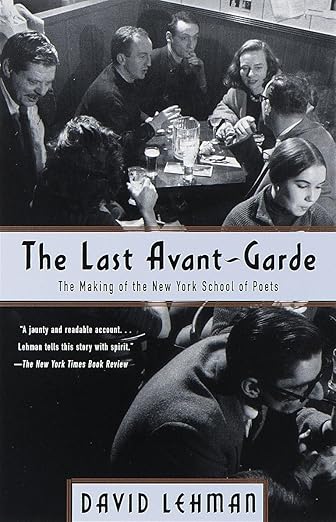
My Comments:
My favorite poems by John Ashbery are:
Grand Gallop, from Self-Portrait in a Convex Mirror, pp. 14-21, 1972
Some Words, from John Ashbery Selected Poems, pp.109-113.
My Notes:
"My poetry is either dismissed as nonsense or held up as a work of genius. I am an important poet, read by younger writers, and on the other hand, nobody understands me."
- John Ashbery
"My poetry is often criticized for failure to communicate, but I take issue with this; my intention is to communicate and my feeling is that a poem that communicates something that's already known by the reader is not really communicating anything to him and in fact shows a lack of respect for him."
- John Ashbery
'To sustain a language that is both mucky and perfumed,
to bring us face to face with the Now in which everything must happen,
to have the reader speak the poem,
to communicate something unknown to the reader,
to write the poem fit for the occasion.'
- Paraphrase of David Herd, JA&AP, p.7
Biographical Information
John Ashbery
From Harvard and Columbia, John Ashbery earned degrees, and he traveled of James William Fulbright to France in 1955. He published more than twenty best known collections, most recently A Worldly Country (2007). Wystan Hugh Auden selected early Some Treesfor the younger series of Elihu Yale, and he later obtained the major national book award and the critics circle. He served as executive editor of Art News and as the critic for magazine and Newsweek. A member of the academies of letters and sciences, he served as chancellor from 1988 to 1999. He received many awards internationally and fellowships of John Simon Guggenheim and John Donald MacArthur from 1985 to 1990. People translated his work into more than twenty languages. He lived and from 1990 served as the Charles P. Stevenson Jr. professor of languages and literature at Bard college.
Research Notes
Reviews, Blog Posts, Webpage Notes
Much has been said of Ashbery's very particular stasis in American poetry: A poet that can unite Harold Bloom and Charles Bernstein in praise as well as unite equally disparate schools of thought in frustration. This is an excellent overview of his early work, although it does miss some of has particularly excellent poetry in the last two-and-a-half decades. The Library of America collection does Ashbery's work a profound service by making it the first work of a living (and still working poet) to be released by them. Even though this does not cover the later 1/4 of his career, the over 450 poems do give one much to enjoy: his early more formal work, "Some Trees" and "The Painter," hint at his more avant-garde moves later on. After those two books, while Ashbery is formally complicated, his rarely ever works in traditional forms or rhymes. Included is one of the most highly regarded of Ashbery's work, 1976's "Self-Portrait in a Convex Mirror," which often serves as an introduction to Ashbery. While not necessarily my favorite work, it is a solid introduction to what Ashbery's poetics are and the fugue states one goes through reading it. In addition, despite the someone obscure topic (Parmigianino ) and the length of the poems, it is one of Ashbery's more accessible post-formal works.
My two favorites within this volume are the ""Houseboat Days," which hit at the more relaxed and free-flowing later poetry including those collections released after the purview of this book, and "The Tennis Court Oath," which is about Ashbery's days in Paris and contain what many see as his most challenging work. Overall, this is an excellent way into the work of John Ashbery and is to be savored.
I've got a couple of Ashbery poetry books around and I tried to like him, especially when some organic farmer girl, Bard grd., opened a stand at our market. I've returned to him now some ten years later with this collection - since he is one of those half dozen or so frequently referred to as our greatest poet, I bought it- and it's been a wonderful discovery. My farmer tells me he wasn't so funny in class, but I think that's one of the best part of the poems. I certainly can see a lot of his style, the open form, in the generation of younger poets. At the same time I've been rereading some Pound and can see a lot coming together here.
Ashbery's own selection from this time period (up to '87) is available, paperback, for less. That's nice, the poet's own selection tells you something; but this volume is everything he wrote in till then including uncollected material, a very detailed chronolgy of his life, 23 pages of notes on the poems and it is in the agreeable Library of America format.
John Ashbery (b. 1927) has achieved a unique status among American poets. Even though much of his work is difficult to read, avant-garde, and post-modernist in character, Ashbery has become revered and beloved by many readers. For all the obscurity of his writing, his poetry is tantalizing and inspiring. It properly draws many people into its orbit. Even those who dislike Ashbery's poetry acknowledge its force and importance.
Ashbery's stature is demonstrated by, among many other ways, this volume of his Collected Poems from 1956 -- 1987 in the Library of America (LOA) series. Ashbery is the first living poet to be honored with a complete volume in the LOA. A second projected LOA volume will cover Ashbery's poetry subsequent to 1987. The Library of America was founded in 1979 to preserve the best of American writing in uniform, accessible editions. It is a series that celebrates America in poetry, history, fiction, philosophy, travel writing, journalism, and more. Ashbery richly deserves his place in it. Ashbery was born in 1927 and was raised in upstate New York. He attended Harvard and Columbia and lived for ten years (1955 -- 1965) in Paris.
This volume consists of over 450 poems. It includes the twelve books Ashbery published between 1956 ("Some Trees") and 1987 ("April Galleons") together with over 60 uncollected poems. Ashbery's first book, "Some Trees" received the Yale Younger Poets Prize. It was romantic in character and made much more use of formal verse forms than did his subsequent work. For example, an excellent early poem in the volume, "The Painter" is written in the highly traditional and formal poetic form called a sestina. (A sestina consists of six six-line stanzas and one three-line stanza with a strict structure in the words which end the lines in each stanza.)
Beyond the first book, Ashbery's work is varied and difficult. It is rarely metered or rhymed. The poems tend to be meditative, in the form of the writer conversing with himself. The poems are seemingly disjointed, with abrupt changes in persons, tenses, and with sometimes startling, incongrous figures. The language passes back and forth from beautiful and original, to colloquial, with frequent cliched or commonplace figures thrown in for effect. Most of the poems resist paraphrase. The poetry explores serious themes, such as love, sexuality, death, the nature of writing, the beauty and variety of the physical world around us, place, childhood. The poems allude freely to art, music, history and literature. For all their modernity, there is a sense of nostalgia in many poems. Inevitably the reader will encounter frustration with this volume. In part, I think Ashbery's goal is to help the reader see things in a new, direct way without the intermediary of stereotypes. The poems are serious, but Ashbery wants to show that seriousness includes playfulness and sometimes whimsy. The poems need to be read both carefully but lightly, to allow the images and lines flow over the reader. When some of the poems appear opaque or even uninteresting -- as many of them will -- the best thing to do is to avoid straining over them and to pass on. This is a long, chronological volume, and there is something to be said from reading it from cover to cover. But it is best read slowly and in small doses.
The central collection in the book "Self-Portrait in a Convex Mirror" is a good place to start as an alternative to reading the book through. This collection won the Pulitzer Prize, the National Book Award, and the National Book Critics Circle Award in 1976, an astonishing achievement. The long title poem consists of Ashbery's reflections on a painting of that name by the Renaissance painter Parmigianino (c. 1524) which in an art museum in Vienna. This celebrated long poem tends, surprisingly, to be more accessible on first blush than does much of Ashbery. The following collection of poems "Houseboat Days" (1977) is almost equally as well-known and is a good way to continue exploring Ashbery's poetry.
The most difficult poems in the book are in an early volume called "The Tennis Court Oath" (1962) which was largely written during Ashbery's stay in Paris. The work is written in a collage style in which sections from different sources are sometimes pasted together in a manner similar to that used by the beat writer William S. Burroughs who also was living in Paris at the time. Subsequent to this collection, Ashbery began the process of modifying the difficulties of his work, a process than has continued through his long career.
My favorite collections in this volume were "Three Poems" (1972) and "The Vermont Notebook" (1975). The former work consists of three lengthy and highly intense prose poems called "The New Spirit", "Theme" and "Recital" to Ashbery's companion, David. The latter book, published in the same year as "Self-Portrait" is a fond look at life in Vermont accompanied by drawings by Joe Brainard. Both these collections will reward reading.
The collections published after "Houseboat Days" tend to be more mixed and laid-back in character than the earlier volumes. A poem called "The Songs we Know Best" in the collection "A Wave" (1984) derives from the poet's repeated hearings of a rock song called "Reunited" which he disliked but couldn't get out of his head. This poem is written in rhyme and meter, unlike most of its companions. Among the many poems in the latter volumes, "Alone in the Lumber Business" , Ashbery's use of Japanese forms in "37 Haikus" and the "Haibuns", and the prose poem "Description of a Masque" seem to warrant mention in this brief overview. The long poem "The Skaters" from the "Rivers and Mountains" collection (1966) is difficult but also is worth singling out for attention.
In an interview he gave to LOA upon publication of the volume, Ashbery mentioned his own little-known favorites from his poems: "He" (from Some Trees); "Idaho" (The Tennis Court Oath); Eclogue(Some Trees); "Rain" (The Tennis Court Oath);"The Chateau Hardware" (The Double Dream of Spring); "Description of a Masque" (A Wave), "Alone in the Lumber Business" (April Galleons) and "The Young Prince and the Young Princess" (uncollected). Ashbery also expresses his fondness for the long poem "Clepsydra" in the "Rivers and Mountains" collection. Readers wishing to browse may wish to look at these selected poems in addition to the poems in "Self-Portrait" and "Houseboat Days".
This is a volume to be read slowly and lightly and over time. A key is to avoid getting angry with oneself or with Ashbery for the many things in this book that will appear almost unintelligible. I am grateful to the Library of America for making this volume available to many readers. I look forward to the second LOA volume of John Ashbery's poetry.
The poetry of John Ashbery has an undeserved reputation for being difficult. To help the uninitiated ENJOY his poetry I have devised this little multi-step program. You can enjoy Ashbery almost anywhere--waiting for dinner, at the bingo hall, drinking with your buds--but you have to have a solid sense of sense.
Step one: Carefully read and reread each sentence until the syntax is clear to you. Look up any unfamiliar words--he does have an unnerving tendency to use long words so a dictionary is necessary. Also look up any references you do not recognize. Wiki is good enough. Do not worry about understanding the sentences nor about translating the "meaning" of the poem in your own words.
Step two: Read the entire poem as a whole, savoring whatever images or ideas float in and out of your mind. At this point you may very well have an inchoate emotional response to the poem, similar to the feeling you have when you weep during a Rachmaninoff piece without knowing why. Do not worry about translating the "meaning" into your own words.
Step three: Read the poem aloud in a colloquial voice and overhear yourself as you read it. Now the poem should make perfect sense to you even though you should not be able to translate the "meaning" into your own words. Its OK to actually read the poem to somebody else at this stage, though if you are at the bingo hall I suggest you wait for a pause between games.
Now you have understood and what is more ENJOYED an Ashbery poem. If at any point you are tempted to verbalize its meaning, hit yourself with a large, soft object.
If you have no response to the poem, you should either leave it for later, or, with a sharp X-acto knife, cut it out of the volume. You should be aware that cutting out the poem will probably reduce the resale value of the volume. However, later generations may value your cut up Ashbery and place it in the Smithsonian with other curiosities, like Thomas Jefferson's New Testament and William Burroughs' life work.
The Songs We Know Best, the first comprehensive biography of the early life of John Ashbery―the winner of nearly every major American literary award―reveals the unusual ways he drew on the details of his youth to populate the poems that made him one of the most original and unpredictable forces of the last century in arts and letters.
Drawing on unpublished correspondence, juvenilia, and childhood diaries as well as more than one hundred hours of conversation with the poet, Karin Roffman offers an insightful portrayal of Ashbery during the twenty-eight years that led up to his stunning debut, Some Trees, chosen by W. H. Auden for the 1955 Yale Younger Poets Prize. Roffman shows how Ashbery’s poetry arose from his early lessons both on the family farm and in 1950s New York City―a bohemian existence that teemed with artistic fervor and radical innovations inspired by Dada and surrealism as well as lifelong friendships with painters and writers such as Frank O’Hara, Jane Freilicher, Nell Blaine, Kenneth Koch, James Schuyler, and Willem de Kooning.
Ashbery has a reputation for being enigmatic and playfully elusive, but Roffman’s biography reveals his deft mining of his early life for the flint and tinder from which his provocative later poems grew, producing a body of work that he calls “the experience of experience,” an intertwining of life and art in extraordinarily intimate ways.
This biography is certainly scholarly. It was five years in the making. It contains 40 pages of careful end notes and a 10-page index. The biographer is a Yale professor, so I suppose the scholarly part is not surprising. What surprised me was how readable and accessible it is. John Ashbery may be America's most acclaimed poet, but he is not a household name - at least in most households. I thought the book would be aimed at poets and other writers, but I was surprised to find the book was irresistible to a non-poet - me. I checked it out from the library at first, but after a few pages, I returned the book to the library and purchased my own copy so I could underline it and consume it. The book covers the first 28 years of Ashbery's life - from his growing up on an orchard in rural New York, the surprising intervention that sent him to Deerfield Academy and subsequently Harvard, and then his life as an artist living in Greenwich Village with his avant garde friends from 1949 to 1955 when he finally gets a Fulbright to study in France (after four previous rejections). I was disappointed when the book ended at age 28. The book pulled me along. I could not put it down. I liked the way Karin Roffman dug up his childhood experiences (like seeing Robin Hood at the movies) to serve as material for his work. I happen to be a straight man, but I was very touched to see the way John Ashbery navigated through difficult times as he discovered that he was gay. Being gay was grounds for getting fired or being banned from many jobs or organizations. One lived in fear. It is also a revealing "coming of age" story about someone who was different. John was relieved when his selection to serve as a Whiz Kid in the 1940's caused the local people to decide that he was a genius - not so strange. John Ashbery is now 90. Five years ago President Obama awarded him a Medal of Honor. Yet his mind must be as sharp as ever. For instance, he recounted for the author the books he read in the summer when he was 15 - Vanity Fair, Tom Jones, Rebecca, Ethan Frome, Hard Times, My Sister Eileen and Arabian Nights and explained to the author what he liked about each book. It was a luscious book. I was disappointed when the story stopped at age 28.
Critical Lives
Mysterious, esoteric, and baffling, John Ashbery is notorious for the seeming difficulty of his work. But Ashbery is also entertaining, humorous, even charming, and ever responsive to his shifting social and political contexts. This biography charts Ashbery’s rise from a minor avant-garde figure to the most important poet of his generation. Jess Cotton provides a legible and accessible roadmap to Ashbery’s work that draws connections between his poetry, New York artists, and mid-century politics. Cotton paints an image of a more approachable and socially engaged Ashbery that will appeal to anyone interested in American poetry, queer lives, and twentieth-century American history.
John Ashbery is America's greatest living poet. He is also greatly misunderstood. For many he is the inheritor of and American tradition that includes Walt Whitman and Wallace Stevens. Yet for some he threatens the very future of poetry. He is a source of continuing inspiration for younger writers of all kinds. Yet he can still prompt startling hostility from reviewers. Lauded by admirers, baffling to detractors, Ashbery's achievement remains perplexingly great. "John Ashbery and American Poetry" takes this paradoxical state of affairs as its starting point. David Herd sets out to provide readers with a new critical language through which they can appreciate the beauty and complexity of Ashbery's writing. Presenting the poet in all his forms -avant-garde, nostalgic, sublime and camp - the book argues that the perpetual inventiveness of Ashbery's work has always been underpinned by the poets desire to write the poem fit to cope with its occasion. Tracing Ashbery's development in the light of this idea, and from its origins in the dazzling artistic environment of 1950's New York, the book evaluates his poetry against the aesthetic, literary and historical backgrounds that have informed it. Ashbery is identified as both an American pragmatist writing in the sprit of William James, and as committed literary internationalist learning from Boris Pasternak and the Russian avant-garde. His poetry is shown to be alive to such culturally defining issues as the growth of mass culture, the absence of a divine presence, the war in Vietnam, the emergence of AIDS, the erosion of tradition, and the decline of the avant-garde. His responses to such pressures are contrasted with the work of, among others, Robert Lowell, John Berryman Kenneth Koch, and Frank O'Hara. The story of a brilliant career, and a history of the period in which that career has taken shape, "John Ashbery and American Poetry" provides a compelling account of Ashbery's importance to Twentieth Century Literature.
John Ashbery is America's greatest living poet. He is also greatly misunderstood. For many he is the inheritor of and American tradition that includes Walt Whitman and Wallace Stevens. Yet for some he threatens the very future of poetry. He is a source of continuing inspiration for younger writers of all kinds. Yet he can still prompt startling hostility from reviewers. Lauded by admirers, baffling to detractors, Ashbery's achievement remains perplexingly great. "John Ashbery and American Poetry" takes this paradoxical state of affairs as its starting point. David Herd sets out to provide readers with a new critical language through which they can appreciate the beauty and complexity of Ashbery's writing. Presenting the poet in all his forms -avant-garde, nostalgic, sublime and camp - the book argues that the perpetual inventiveness of Ashbery's work has always been underpinned by the poets desire to write the poem fit to cope with its occasion. Tracing Ashbery's development in the light of this idea, and from its origins in the dazzling artistic environment of 1950's New York, the book evaluates his poetry against the aesthetic, literary and historical backgrounds that have informed it. Ashbery is identified as both an American pragmatist writing in the sprit of William James, and as committed literary internationalist learning from Boris Pasternak and the Russian avant-garde. His poetry is shown to be alive to such culturally defining issues as the growth of mass culture, the absence of a divine presence, the war in Vietnam, the emergence of AIDS, the erosion of tradition, and the decline of the avant-garde. His responses to such pressures are contrasted with the work of, among others, Robert Lowell, John Berryman Kenneth Koch, and Frank O'Hara. The story of a brilliant career, and a history of the period in which that career has taken shape, "John Ashbery and American Poetry" provides a compelling account of Ashbery's importance to Twentieth Century Literature.
David Herd sets out to provide readers with a new critical language through which they can appreciate the beauty and complexity of Ashbery’s writing.
Presenting the poet in all his forms –avant-garde, nostalgic, sublime and camp – the book argues that the perpetual inventiveness of Ashbery’s work has always been underpinned by the poets desire to write the poem fit to cope with its occasion.
Tracing Ashbery’s development in the light of this idea, and from its origins in the dazzling artistic environment of 1950’s New York, the book evaluates his poetry against the aesthetic, literary and historical backgrounds that have informed it.
The story of a brilliant career, and a history of the period in which that career has taken shape, John Ashbery and American Poetry provides a compelling account of Ashbery’s importance to Twentieth Century Literature.
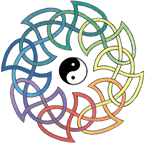
Poetry by Mike Garofalo: Online
25 Steps and Beyond: Collected Works
Bundled Up: Quintains and Tankas
At the Edges of the West
Highway 101 and Hwy 1: Pacific Coast
Cuttings: Haiku, Senryu, Brief Poems
At the Edges of the Fertile West
Highway 99 and Interstate 5

Mike Garofalo lives in Vancouver,
Washington. He worked for 50 years
in city and county
public
libraries,
and in elementary
schools. His degrees
are in philosophy,
library science, and
education. He has been a web publisher
since 1998.
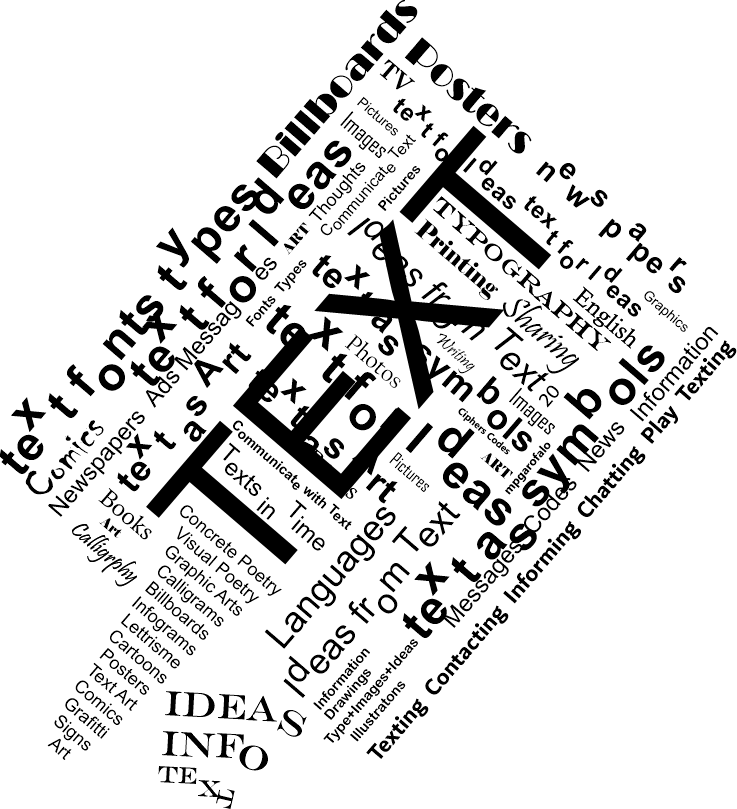
25 Steps and Beyond: Collected Works
I really appreciate positive feedback,
reviews, kudos, and encouragement
about the value
of
my free webpages.
Send your comments to:
Text Press Email
This document was last edited, revised,
reformatted, added to, relinked,
changed, improved, or modified
by Mike Garofalo
on May 25, 2025.